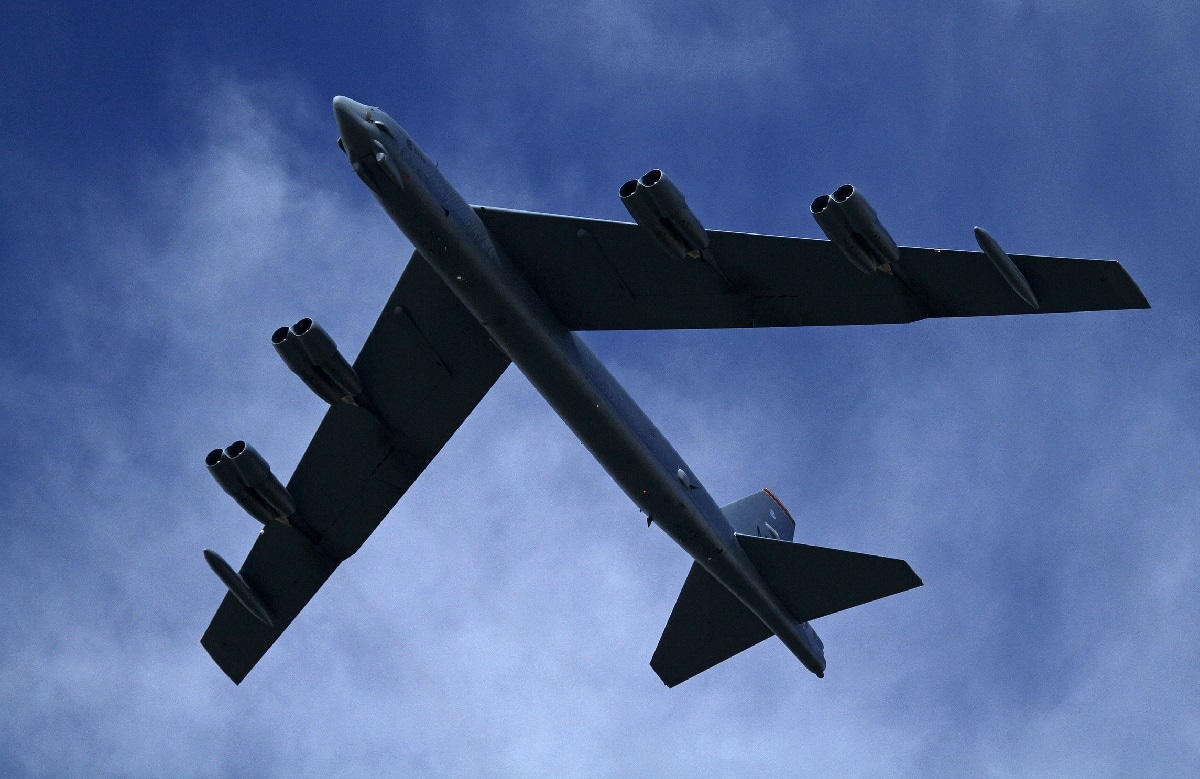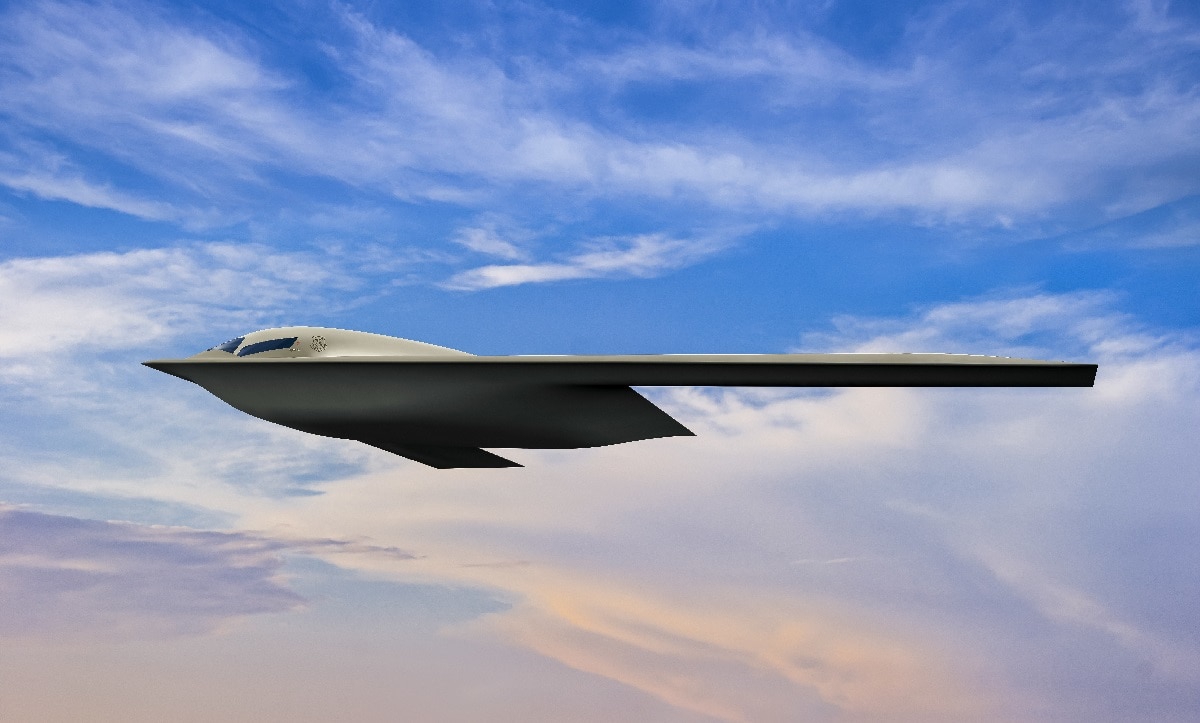How Many B-21 Raider Bombers Are Needed? At some point in the future, officials from the Department of the Air Force will likely be seated in a House subcommittee in our nation’s capital and asked a blunt question from United States lawmakers: How many B-21 Raider bombers do you actually need?
Some U.S. Air Force officials are already pondering that query. Current plans call for the service to operate at least 100 long-range strategic bombers, but there have been calls for the Air Force to acquire upwards of 179 or more.
According to the United States Air Force, “The B-21 Raider will be a dual-capable penetrating strike stealth bomber capable of delivering both conventional and nuclear munitions. The B-21 will form the backbone of the future Air Force bomber force consisting of B-21s and B-52s. Designed to operate in tomorrow’s high-end threat environment, the B-21 will play a critical role in ensuring America’s enduring airpower capability.”
Are 100 of the bombers enough? Does the United States need 179? What is the answer? It is difficult to answer, as it isn’t entirely clear how either number was actually decided.
Replacing the Current Bomber Fleet with B-21
The “100” number is a nice round number – and throughout time, the military has liked nice round numbers. Modern European armies have long been broken down into companies – part of a larger battalion – that usually consists of between 100 and 150 men. Moreover, it should be noted that a Roman Legion’s most basic unit was a century – and it originally consisted of 100 men led by a Centurion. While it later varied in size with subsequent reforms, a “century” is still where we get the term for 100 years.
This brings us back to the bombers, and perhaps 100 was just a nice round number.
The service currently operates slightly fewer than 125 bombers – which includes fifty-eight B-52H Stratofortresses, forty-five B-1B Lancers and just twenty B-2 Spirits.
As a historical note, the United States manufactured more than 295,000 combat aircraft during the Second World War, including 97,810 bombers. It was a staggering number of aircraft that included 12,731 B-17 Flying Fortresses and 18,493 B-24 Liberators. However, just 3,970 B-29 Superfortresses were built – and it could even be argued that just two of those aircraft were what was needed to “end the war,” as each dropped an atomic bomb and resulted in the Japanese surrender (and before anyone comments, yes, the declaration of war by the Soviet Union played a crucial role as well).
That latter fact about the capabilities employed by the B-29 was a game changer and highlighted that an Air Force didn’t need massive numbers of four-engine aircraft to carpet bomb an enemy. In fact, only 744 B-52s were ever produced – and despite entering service 70 years ago, as noted currently, just fifty-eight are still in service.
The role of the B-52 has also evolved.
During the Vietnam War, the B-52 was employed as part of Operation Linebacker II, the aerial bombing campaign conducted by the Seventh Air Force, Strategic Air Command and U.S. Navy Task Force 77 against targets in the Democratic Republic of Vietnam (North Vietnam). The heavy bombers flew more than 5,000 missions and more than 8,000 tons of bombs were dropped.

Image: Creative Commons.
By contrast today, the upgraded B-52H can carry a total of 20 air-launched cruise missiles, which means it can strike targets from a considerable distance. The same is very much true of the Russian Tupolev Tu-95MS, which is officially designated as a missile carrier, not a bomber since it carries only cruise missiles.
Doing More With Less
Bomber production has been on a downward trajectory since even before the end of the Cold War. Moreover, the role of the bomber has diminished so much in the era of intercontinental ballistic missiles (ICBMs) and submarine-launched nuclear warheads that currently only three nations even operate bomber fleets. In addition to the United States, only Russia and China maintain bombers.
However, there are reports that Australia would like to “rejoin” the exclusive bomber club, and Canberra has expressed interest in acquiring an unknown number of B-21 Raiders. If such a deal were to be made, it would likely further impact the number of bombers that the United States Air Force may require since fewer aircraft might need to be rotated to bases in Guam as Australia could provide a deterrent.

Image: U.S. Air Force
This brings us back to the original question, how many B-21 Raiders might the Air Force need? It would seem that if the service operates around 125 bombers today, it would be a good place to start. But the military certainly doesn’t need nearly 100,000 – as much as Northrop Grumman would likely be happy for the business.
What the Experts Told 19FortyFive on the B-21
“The U.S. Air Force bomber fleet is ancient and needs a serious upgrade. Yes, Washington does still sport the best bomber fleet on Earth, but it is showing its age and will face tough air defenses from Russia and China if a war ever broke out. While the Air Force, I am sure, will take as many bombers as they can get, 100 to even as many 200 is not out of the question,” explained a former Senior Obama Administration Defense Department offical to 19FortyFive.
Expert Biography: A Senior Editor for 1945, Peter Suciu is a Michigan-based writer who has contributed to more than four dozen magazines, newspapers, and websites with over 3,000 published pieces over a twenty-year career in journalism. He regularly writes about military hardware, firearms history, cybersecurity, and international affairs. Peter is also a Contributing Writer for Forbes. You can follow him on Twitter: @PeterSuciu.

